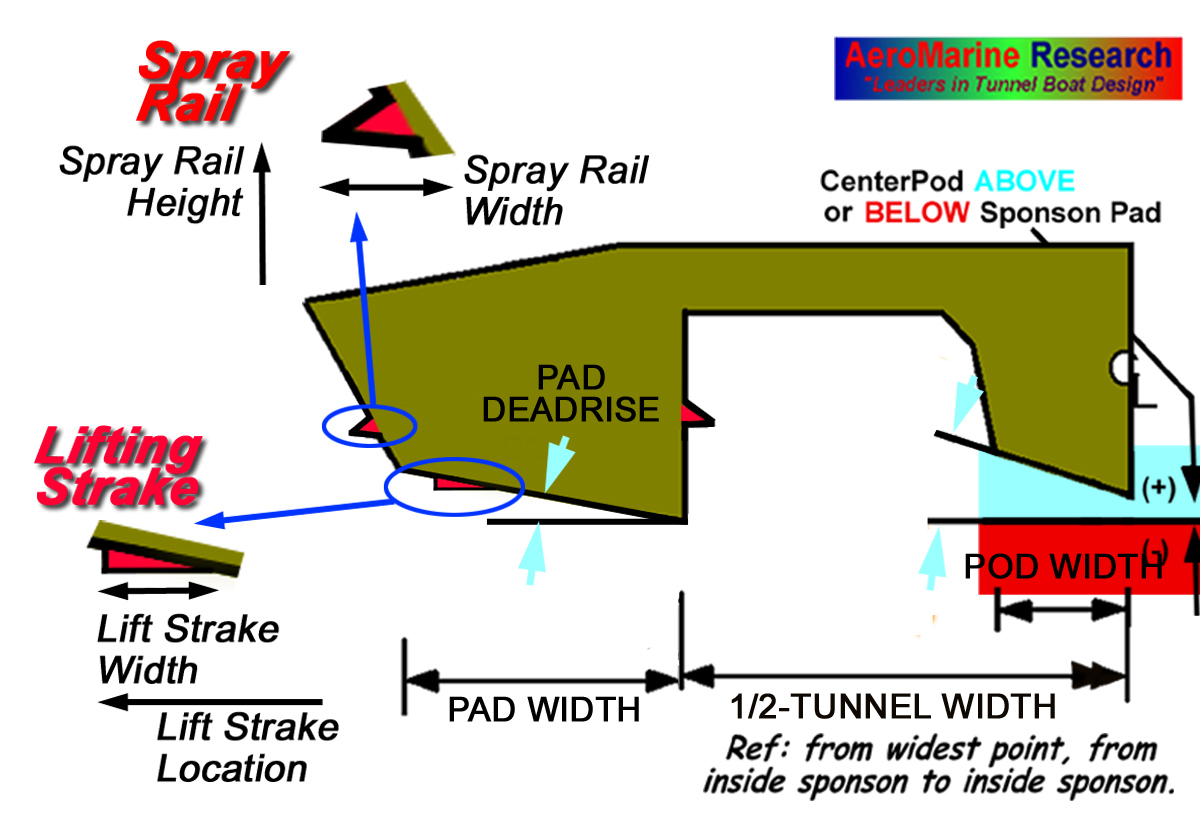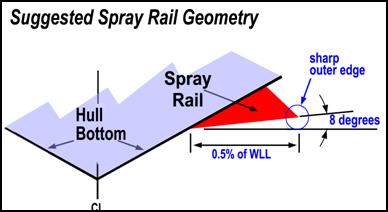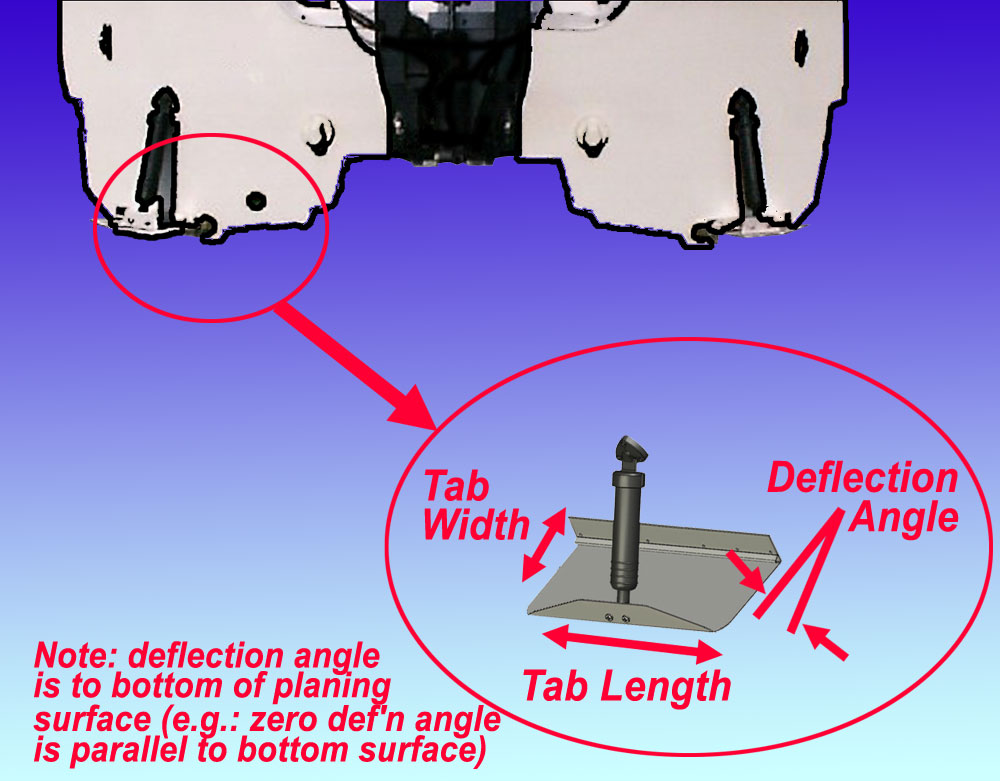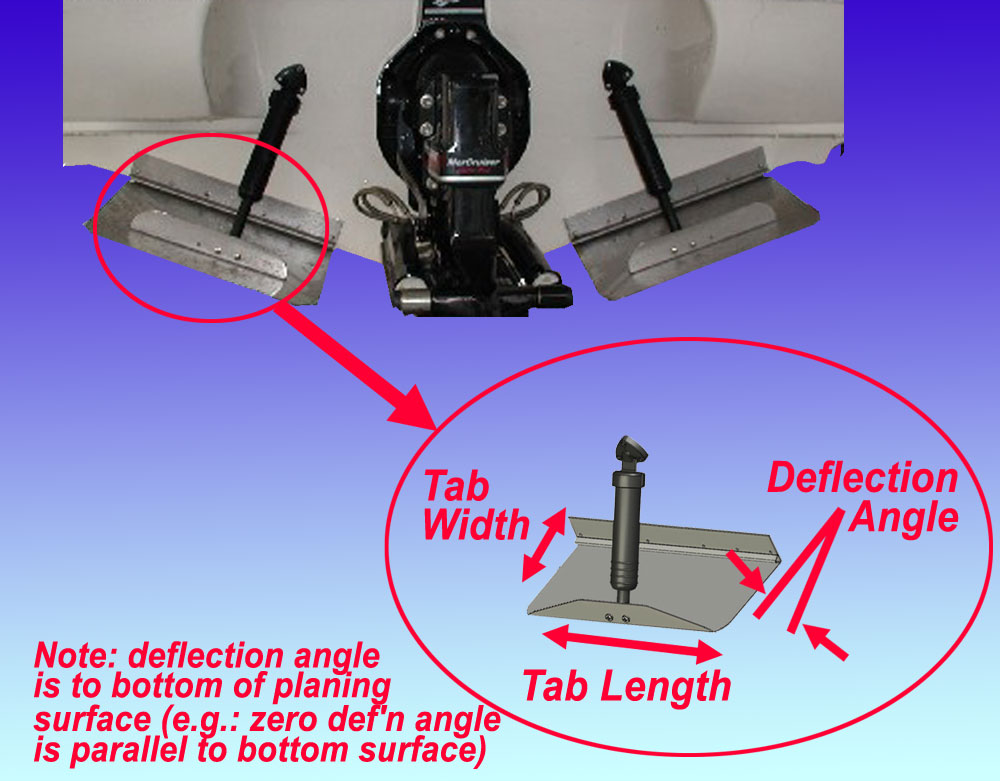|
|
|
 |
|
| Performance Boat design and setup secrets for Recreational tunnels, Offshore Cats, Racing tunnels, Fishing/Utility hulls, Vee and Vee-Pad Hulls, Bass Boats | |
| Home New About Us Free Articles Technical Articles TBPNews Archives FREE Downloads Research Contact Us | |
Testimonials What Others Say
Join
TBPNews Advertise
Links
Search Buy Now 
|
|
| AR© develops advanced analysis techniques for Spray Rails, Lifting Strakes and Trim Tabs. | ||
| Get complete article by email request: | Share: | |
| BREAKTHROUGH! | ||
|
|
TBDP©/VBDP© calculates Lift and Drag contributions from Lifting Strakes, Spray Rails
and Trim Tabs - for ANY hull design configuration, throughout the
entire operating velocity range AR® has developed analysis techniques that calculate hydrodynamic lift and drag contributions of Lifting Strakes, Spray Rails and Trim Tabs. These performance aspects are different on tunnel hulls and vee hulls, and so are, of course, handled appropriately for each design, each setup arrangement and different at each operating velocity. It's important to recognize that Spray Rails and Lifting Strakes are different. Spray rails are usually located on the outer chine surface, about half-way between sponson bottom and deck (sheer clamp). Outer spray rails can improve hydrodynamic lift at lower CLW's (lower velocities) and reduce induced spray drag. Lifting Strakes are located on planing surfaces, are designed to have a surface generally flat (zero deadrise) to water surface, and generate increased lift at improved efficiency under some conditions. Spray Rail Design - Spray deflector should be triangular in shape with it's bottom nearly horizontal to the water surface – or at a slight upward (8°) angle. The "downward" angled spray rails seen on some boats are less than optimum for effectively diverting the spray away from the hull surface. The outer edge of the spray rail should be sharp and not rounded. [see also article: Design of Strakes and Spray Rails] Lifting Strakes can be specified for tunnel hull or Vee hull configurations. TBDP©/VBDP© accounts for Lift Strake Design: High-lift strakes are located symmetrically (on both sides of the keel) and parallel to the keel of the hull. They are triangular in shape with their lower surface flat and horizontal (parallel) to the water surface (0° angle). The corner/edge of the strake should be sharp, not rounded. Care is needed to consider the 'trip edge' presented by lift strake as this can hamper maneuvering (turning). Lateral placement of strakes is important, particularly when employing multiple strakes. [see also article: Design of Strakes and Spray Rails] Lift Strake Analysis: Lift strakes contribute to hull hydrodynamic lift based on their local effectiveness at various hull conditions and velocities. The length of wetted strake length affects amount of lift and location of lift contribution forces. The bWidth of hull planing surfaces changes with trim angle, variable deadrise and velocity (see Fig. 4). This affects each strake location, and is particularly complex when employing multiple strakes in the hull design. As velocity increases, outermost located lift strakes can become 'un-wetted', no longer contributing to lift. This is different for each strake location. For example, with a hull employing 3 longitudinal strakes, as operating speed increases, the 'wetted zone' of the bWidth 'triangle'-to-partial chine width is changing. This can progressively 'unwet' first the outermost (3rd), then the 2nd strake and ultimately even innermost (1st) of 3-set strakes. Lift, drag and center of lift location are affected. Some parts of each strake may be effective, while other parts are not. Accurate hydrodynamic analysis must take all of these conditions into account through the full hull operating velocity range. Many software applications don't do this part of the analysis accurately - AR® analysis techniques handle this completely - and it makes a difference!
Complex analysis solves Lift/Drag and moments generated by deflected Trim Tabs, and effects on Dynamic Stability, Porpoising, ForceMoments. TBDP©/VBDP© allows for setting of auto-retraction at specifiied velocity for safe/practical analysis. Trim Tabs Design - caution should be used when defining dimensions and setup of Trim Tabs (and particularly in actual use with your hull on the water). Trim Tabs that are sized or set up so as to provide a significant % of the total lift of the hull can create instability. Tabs should be retracted when hulls are at higher velocities.] |
|
|
Research results now included in performance analysis by TBDP©/VBDP© [more about AR's research more about AR's publications and technical articles/papers] |
||
|
© Copyright 2017 by Jim
Russell and AeroMarine Research® - all rights reserved. Material from this website may not be copied or used or redistributed, in whole or in part, without the specific written consent of Jim Russell or AeroMarine Research. |
||








